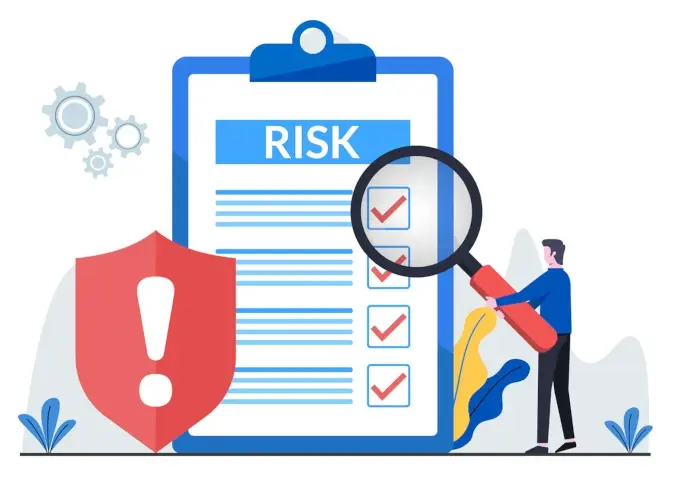MacroFab Blog
Even as news of economic uncertainty remains top of mind, the electronics industry remains more stable than one might expect. Inflation remains high, but the uptick is slowing. Meanwhile, bank chaos has been notable but, while likely to continue, is not necessarily indicative of a looming worldwide economic failure. In all, the bad news seems to be not quite as bad as we may have feared. At the same time, strategic monitoring will be vital to the success of the industry.
“The banking crisis and attempts to fight inflation has created uncertainty and that uncertainty metastasizes into a whole lot of areas,” said Rich Hans, CFO at Flip Electronics, an independent electronics distributor. “We need to heed the warning signs and be on top of our game in terms of knowing what we need. CFOs and sales managers need to be in concert so they don’t screw up their own supply chain.”
Impacts of Bank Failures
Checkpoint
Although things are getting better, there’s likely to be economic turbulence ahead for tech companies.

In March 2023, Silicon Valley Bank (SVB) was seized by regulators after a failed attempt to raise capital perpetuated a spate of large withdrawals that put the bank in trouble. In just two days, customers requested 81 percent of SVB’s $175 billion in deposits, according to a report from IPC. Two days later, Signature Bank suffered a similar fate, representing the second and third largest failures of American banks. (The largest was the closure of Washington Mutual in 2008.) In an extraordinary measure, the Federal Reserve, the Federal Deposit Insurance Corporation, and the U.S. Department of the Treasury guaranteed all deposits at both banks, the IPC said.
This may be the start of a larger pattern. “This is just the start of a wider banking crisis,” said Shawn DuBravac, IPC chief economist in a written statement. “One that will get worse before it gets better. Banks will be cautious, raising lending standards, protecting capital, and creating greater liquidity buffers. Expect the coming months to remain volatile.”

Concerned bank customers are moving deposits from smaller banks to larger ones - which can put smaller regional banks at risk. Meanwhile, banks respond by tightening lending standards which put barriers in front of customers who need money for equipment, hiring, or critical inventory. The hit may be particularly hard on technology startups who depend on these funds.
In the same way that sole sourcing a particular component is risky, organizations may want to consider broadening their banking strategy to ensure their money is protected. “Spreading out your deposits across multiple banks, with each deposit being under $250,000, would provide a degree of security against a single bank going under,” said Summit Vakil, CPO & Co-Founder of Resilinc, a supply chain risk management company. “This approach does come at a cost, though. You must figure out how to efficiently and effectively manage your deposits in multiple banks while simultaneously meeting your payment commitments such as payroll, payables, etc. You may also be contractually limited by your bank with regard to where you put your money.”
The Inflation Equation

On the economic front, inflation continues but is slowing, reaching six percent in February 2023, according to the U.S. Bureau of Labor Statistics. That’s the lowest it’s been since September 2021-and lower than the 6.4 percent level that started the year.
The technology industry, and especially the semiconductor industry, is being shaped by these factors. Interest rates are going up and high inflation is causing concern. Meanwhile, consumer confidence is down and the tech-led stock market has been in a downturn. For example, the top 10 global chip companies’ combined market cap is down 34 percent from $2.9 trillion in November 2021 to $1.9 trillion in November 2022, according to a report from Deloitte.
Companies will face larger debts and slowed dividend growth corporate debt coming due in 2023 which could entice a “perfect macroeconomic storm,” predicts Resilinc partner Rapid Ratings, according to Vakil. “A perfect storm here consists of heavy debt loads, financial risk, and minimal access to capital,” he added. “Companies with access to capital markets and banking systems that can refinance debt with lower rates will benefit.”
Planning for Uncertainty

Although things are getting better, there’s likely to be economic turbulence ahead for tech companies. In economically lean times, leadership will need to focus on building resiliency and reducing financial risk, especially in the supply chain. “With cash flow and working capital tightening up this will begin causing problems several layers deep,” said Vakil. “Liquidity problems in the global capital markets can quickly spill over to supply chains as most buyers and suppliers are heavily dependent on their banks and the securities markets for working capital to finance production, inventories, and receivables.”
In uncertain times, organizations resort to a variety of safety valves including purchasing less, reducing inventory, and lengthening payment cycles—all of which may exacerbate the overall challenges.
Resilinc’s Vakil offers a handful of tips on a path toward increased safety:
- Map the supply network. Dig below the tier-one network to know where all parts are coming from. A well-mapped supply network allows organizations to collaborate with suppliers to reduce risk. (As an added benefit, you can get some visibility into which suppliers are using which banks.)
- Conduct supplier risk assessments. Launch risk surveys to individual suppliers and assess the financial health of key suppliers going down two and three tiers. Once you’ve done this you can flag supply chain weaknesses and implement strategies and playbooks to reduce risks.
- Monitor supplier network continuously. Risk monitoring provides real-time insight into potentially threatening events, enabling businesses to act immediately. Fortunately, it’s possible to access solutions that use AI and other cutting-edge technologies to not only identify but predict supply chain disruptions against a number of possible risk events, including financial risks.
Recent banking chaos has certainly put ripples in the high-tech manufacturing system. As banks scramble to strengthen their balance sheets and interest rates go up, the economic machine inevitably slows down. The key to success will be careful management and strong relationships.
Related Topics
Preparing for Potential Supply Chain Disruptions During Lunar New Year
This blog discusses on how to prepare for unexpected events for global supply chains such as the dockworker strike in preparation for Lunar New Year.
Mapping Out a PCBA Supply Chain Strategy in Five Moves
Companies should create unique vendor relationships with numerous international suppliers due to the necessity of having to source components globally.
MacroFab’s Modern Approach to Strategic Sourcing
Many Contract Manufacturers (CMs) and Original Equipment Manufacturers (OEMs) have some sort of procurement team. So what makes MacroFab so different?
Contact a MacroFab Specialist
Learn how we can help you improve supply chain resilience.
About MacroFab
MacroFab offers comprehensive manufacturing solutions, from your smallest prototyping orders to your largest production needs. Our factory network locations are strategically located across North America, ensuring that we have the flexibility to provide capacity when and where you need it most.
Experience the future of EMS manufacturing with our state-of-the-art technology platform and cutting-edge digital supply chain solutions. At MacroFab, we ensure that your electronics are produced faster, more efficiently, and with fewer logistic problems than ever before.
Take advantage of AI-enabled sourcing opportunities and employ expert teams who are connected through a user-friendly technology platform. Discover how streamlined electronics manufacturing can benefit your business by contacting us today.